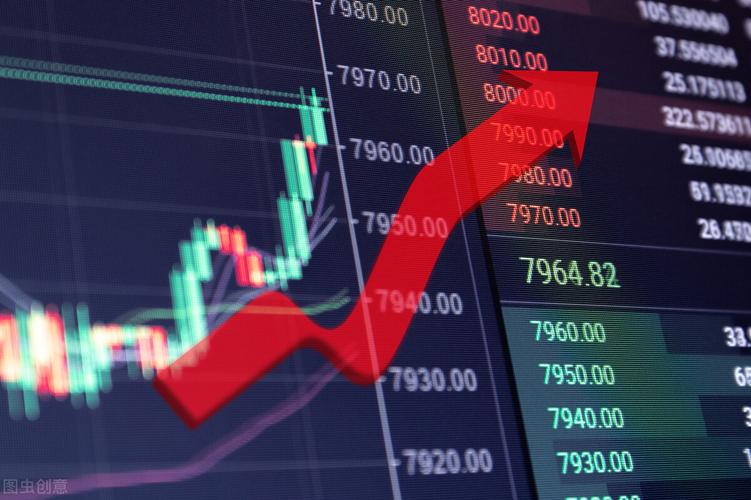股票上涨翻译
Title: Understanding Stock Price Surges
In the realm of finance, when the value of a stock experiences a sudden and significant increase, it is commonly referred to as a "stock price surge" or "stock price skyrocketing." This phenomenon can occur due to various reasons and is often accompanied by heightened investor interest and trading activity. Let's delve into the factors that can contribute to such occurrences and explore the implications they hold for investors.
Market Sentiment and Speculation
One of the primary drivers behind stock price surges is market sentiment. Positive news or developments related to a company, industry, or the overall economy can ignite optimism among investors, leading to increased demand for its stock. This heightened demand can quickly drive up the stock's price, sometimes beyond its intrinsic value, fueled by speculative buying.

For instance, if a pharmaceutical company announces a breakthrough in drug development, investors may anticipate substantial future profits and rush to buy its stock, causing a surge in its price. Similarly, favorable economic indicators, such as robust GDP growth or declining unemployment rates, can boost investor confidence, resulting in broadbased stock market rallies.
Earnings Reports and Financial Performance
Another significant factor influencing stock price movements is a company's earnings reports and financial performance. When a company exceeds market expectations by reporting betterthanexpected earnings, revenue growth, or profit margins, investors often respond positively by bidding up its stock price.
Conversely, disappointing earnings results can have the opposite effect, causing a selloff and driving the stock price down. However, it's essential to distinguish between shortterm fluctuations driven by quarterly earnings and longterm trends in a company's fundamental performance.
Industry Trends and Catalysts
Stock price surges can also be driven by broader industry trends or specific catalysts affecting a particular sector. For example, regulatory approvals, technological innovations, or shifts in consumer behavior can profoundly impact certain industries and trigger significant movements in stock prices.
Consider the renewable energy sector, which experienced substantial growth in recent years due to increasing global emphasis on sustainability and climate change mitigation. As governments worldwide implement policies favoring renewable energy adoption, companies operating in this sector witness heightened investor interest and corresponding stock price surges.
Short Squeezes and Market Dynamics
In some cases, stock price surges may result from short squeezes, a situation where investors betting against a stock (short sellers) are forced to buy shares to cover their positions as the stock price rises rapidly. This rush to buy can exacerbate the upward momentum, leading to a dramatic surge in the stock's price.
Short squeezes often occur when there is a high level of short interest in a particular stock, combined with positive news or unexpected developments that catch short sellers off guard. The resulting scramble to close out short positions can amplify the price surge, creating significant volatility in the market.
Investor Psychology and Behavioral Factors
Lastly, it's essential to acknowledge the role of investor psychology and behavioral factors in driving stock price surges. Human emotions such as fear, greed, and herd mentality can influence market participants' decisionmaking processes, leading to irrational exuberance or panic buying/selling.
During periods of euphoria, investors may exhibit a "fear of missing out" (FOMO) mentality, rushing to buy stocks that are experiencing rapid price appreciation for fear of being left behind. This behavior can fuel further price surges, detached from underlying fundamentals.
Conclusion: Navigating Stock Price Surges
While stock price surges can present lucrative opportunities for investors to capitalize on shortterm gains, they also carry inherent risks, including heightened volatility and the potential for abrupt reversals. Therefore, it's crucial for investors to approach such situations with caution, conducting thorough research and maintaining a diversified portfolio to mitigate risk.
Additionally, maintaining a longterm perspective and focusing on a company's underlying fundamentals can help investors distinguish between transient market hype and sustainable value creation. By staying informed, disciplined, and resilient in the face of market fluctuations, investors can navigate stock price surges more effectively and pursue their financial goals with greater confidence.
Disclaimer: This information is for educational purposes only and should not be construed as financial advice. Investors should conduct their research or consult with a qualified financial advisor before making investment decisions.
股市动态
MORE>-

火灾赔偿标准一览表
火灾保险赔偿标准火灾保险是一种重要的财产保险形式,旨在保护被保险人免...
-

深度解析航天电子的投资价值与未来潜力
对于许多投资者来说,选择正确的股票进行投资不仅是艺术,更是科学,在众...
-

深度解析豫光金铅,行业龙头,黄金矿业的投资潜力与风险探析
一、公司概述:豫光金铅,全称为河南豫光金铅股份有限公司,作为国内领先...
-

深度解析与投资攻略,三丰智能——探索智能化转型的科技巨头
公司简介三丰智能,一家专注于智能制造领域的高新技术企业,以其卓越的自...
-

深度解析东方国信,一只潜力与挑战并存的股市明珠
在风云变幻的股票市场中,东方国信无疑是一颗熠熠生辉的明星,以其稳健的...
- 搜索
- 最近发表
-
- 深入了解股票分析系统的功能模块,投资者的智能助手
- 探索688077,解锁科技新纪元的钥匙
- 综合保险查询,全面了解您的保障
- 东莞疫情新动态,新增1例无症状感染者,市民需保持警惕并加强防护
- 股票在线诊断软件,投资者的智能助手
- 探索铁路股,投资的铁轨与机遇
- 宁波联合(600051)深入解析与投资价值评估
- 同花顺个股分析网,投资者的智能助手
- 深入了解600705,最新动态与投资洞察
- 深入解析同花顺,如何找到并利用个股分析功能
- 辽宁疫情新动态,昨日新增7例本土无症状感染者深度解析
- 2021年端午节,传统与现代的交融
- 探索太平洋A股,投资海洋中的宝藏
- 药石转债,投资新机遇与风险分析
- 股票分析师的工作内容有哪些
- 大晟文化股票诊断,深入分析与投资策略
- 数字密码,解析688209背后的神秘故事
- 辽宁职校封闭管理下的病毒破防,疫情应对与心理调适指南
- 红太阳(000525)探索中国农药行业的领军企业
- 深入解析,股票诊断分析的艺术与科学
- 标签列表
-
- 兴业银行理财月月得益赎回规定 (4)
- 英伟达市值涨了多少倍 (4)
- 博时月月享基金安全吗 (4)
- 港股恒指遭遇重挫跌46% (5)
- 港股恒指怎么交易需要多少资金 (4)
- 主力资金净流入排行榜 (5)
- 股票财经方面有哪些 (13)
- 财经股票基础知识 (6)
- 最好的股票财经网 (8)
- 财经与股票 (10)
- 财经讲股票的栏目 (8)
- 谈论股票的财经频道 (7)
- 财经a股 (5)
- 财经类股票 (13)
- 股票初学者相关财经知识 (6)
- 财经诊股 (5)
- 财经类股票网站 (5)
- 财经股票入门基础知识 (4)
- 股票财经推荐 (5)
- 港股午评:恒指跌3.87%失守24000点 (4)
- 永赢基金行情 (4)
- 股票财经 (6)
- 财经股票怎么玩赚钱 (5)
- 财经股市大家谈 (5)
- 港股恒指今日收盘走势 (4)
